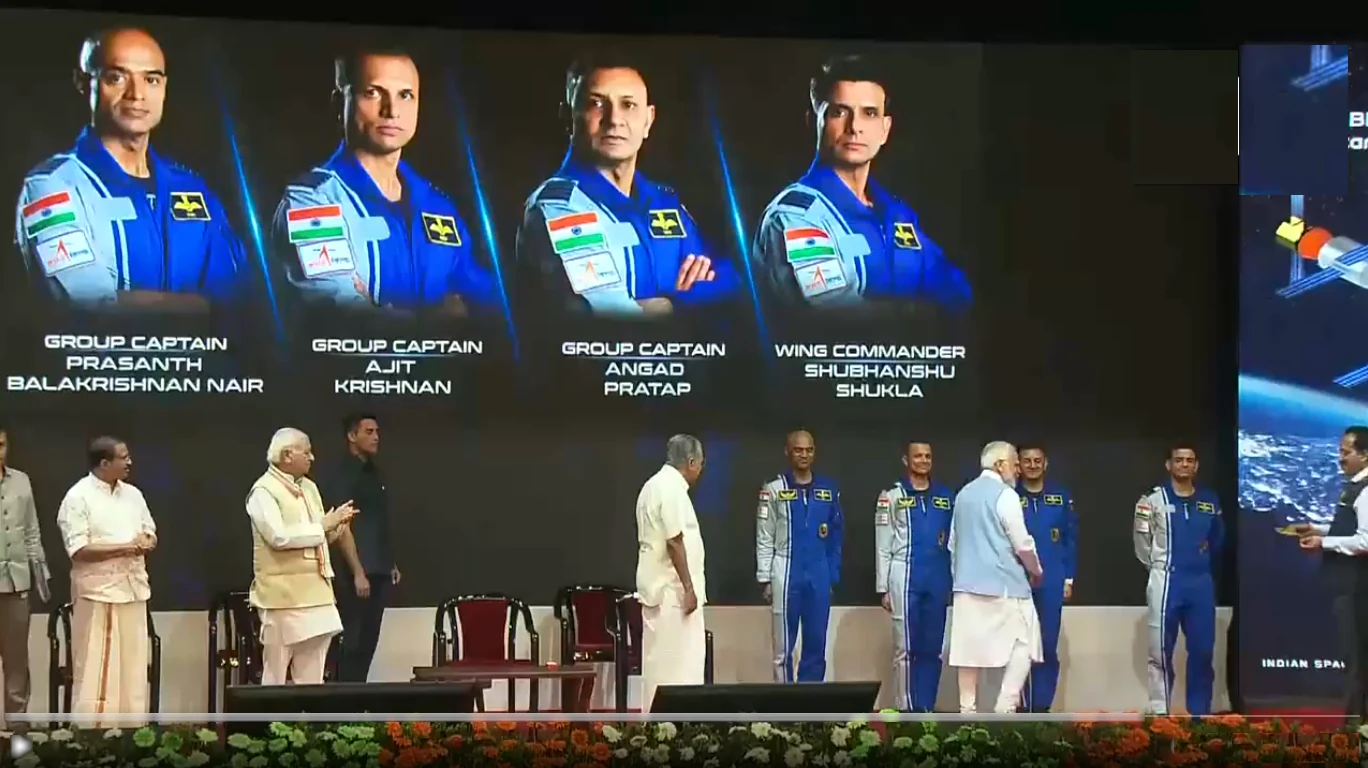On February 27, 2024, Prime Minister Narendra Modi bestowed astronaut wings upon the four chosen individuals set to represent India in its ambitious Gaganyaan human spaceflight mission, scheduled for 2025. The honored recipients are Group Captain Prasanth Balakrishnan Nair, Group Captain Ajit Krishnan, Group Captain Angad Prathap, and Wing Commander Shubhanshu Shukla, all esteemed Indian Air Force (IAF) test pilots from the Aircraft and Systems Testing Establishment (ASTE) in Bengaluru.
The Prime Minister unveiled the identities of these astronaut designates during his visit to the Vikram Sarabhai Space Centre (VSSC) in Thiruvanathapuram. Emphasizing the significance of the Gaganyaan mission, Modi reiterated the government’s commitment to showcasing India’s self-reliance in human space exploration.
Selected through a rigorous process, the four astronauts underwent comprehensive training in various facets of spaceflight, initially in Russia and later at the Astronaut Training Facility established by the Indian Space Research Organisation (ISRO) in Bengaluru. The final crew for the mission will be chosen from this accomplished quartet.
In addition to presenting the coveted astronaut wings, Modi reviewed the advancements made in the Gaganyaan Mission and inaugurated three critical technical facilities worth approximately ₹1,800 crore. These include the state-of-the-art Trisonic Wind Tunnel at VSSC, the PSLV Integration Facilities at Satish Dhawan Space Centre, Sriharikota, and the Semi-cryogenic Integrated Engine and Stage Test Facility (SIET) at the ISRO Propulsion Complex (IPRC) in Mahendragiri, Tamil Nadu.
Expressing optimism about India’s expanding role in space exploration, Modi highlighted ISRO’s plans to send astronauts to the moon by 2040 and emphasized the country’s evolving space economy. The Prime Minister projected a five-fold increase in the Indian space economy, reaching $40 billion within the next decade. He also envisioned the establishment of a space station by 2035 and the return of Indian astronauts to the moon using indigenous spacecraft and rockets during the Amrit Kaal.
